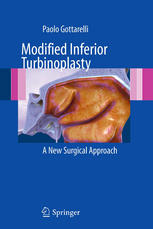

Most ebook files are in PDF format, so you can easily read them using various software such as Foxit Reader or directly on the Google Chrome browser.
Some ebook files are released by publishers in other formats such as .awz, .mobi, .epub, .fb2, etc. You may need to install specific software to read these formats on mobile/PC, such as Calibre.
Please read the tutorial at this link: https://ebookbell.com/faq
We offer FREE conversion to the popular formats you request; however, this may take some time. Therefore, right after payment, please email us, and we will try to provide the service as quickly as possible.
For some exceptional file formats or broken links (if any), please refrain from opening any disputes. Instead, email us first, and we will try to assist within a maximum of 6 hours.
EbookBell Team

4.4
72 reviewsHumans can resist 40 days without eating and 4 days without drinking, but only 4 minutes without breathing: this tells us much about its fundamental importance. Breathed air is slowed down, filtered, warmed and humidified by the nose; many mechanisms are involved in this act, which prevent bronchial tubes and pulmonary alveolus from receiving an excessive and sudden air load. It is well known, on the other hand, that breathing through the mouth causes a lot of problems: inflammatory diseases of the upper airways, sleep apnea syndrome, but also, in some cases, bronchial, pulmonary and even cardiac disorders, that are more easily affecting patients not able to breathe correctly through the nose. For this reason, restoring an efficient nasal function is a very important - and in some cases crucial - issue. This book describes in details an innovative surgical technique called modified inferior turbinoplasty, which offers an excellent solution to the problems associated with the lower turbinate hypertrophy. A turbinate (or nasal concha) is a long, narrow, curled bone shelf that protrudes into the breathing passage of the nose. Most surgical interventions treat only the soft parts of hypertrophic turbinates using laser therapy, radiofrequency treatment, and electrocoagulation, but these procedures often lead to relapse. With this technique, in contrast, all anatomic parts of the turbinate are treated, including bone tissue: the surgeon reduces the inferior nasal concha and the internal nasal tissue, and the mucosa is then remodeled with sutures. The modified inferior turbinoplasty allows the complete avoidance of swabs in the nose, which is fundamental for patients well-being and grant them a quicker recovery. The book will be very useful for othorinolaryngologists, plastic surgeons, endoscopic and maxillofacial surgeons.